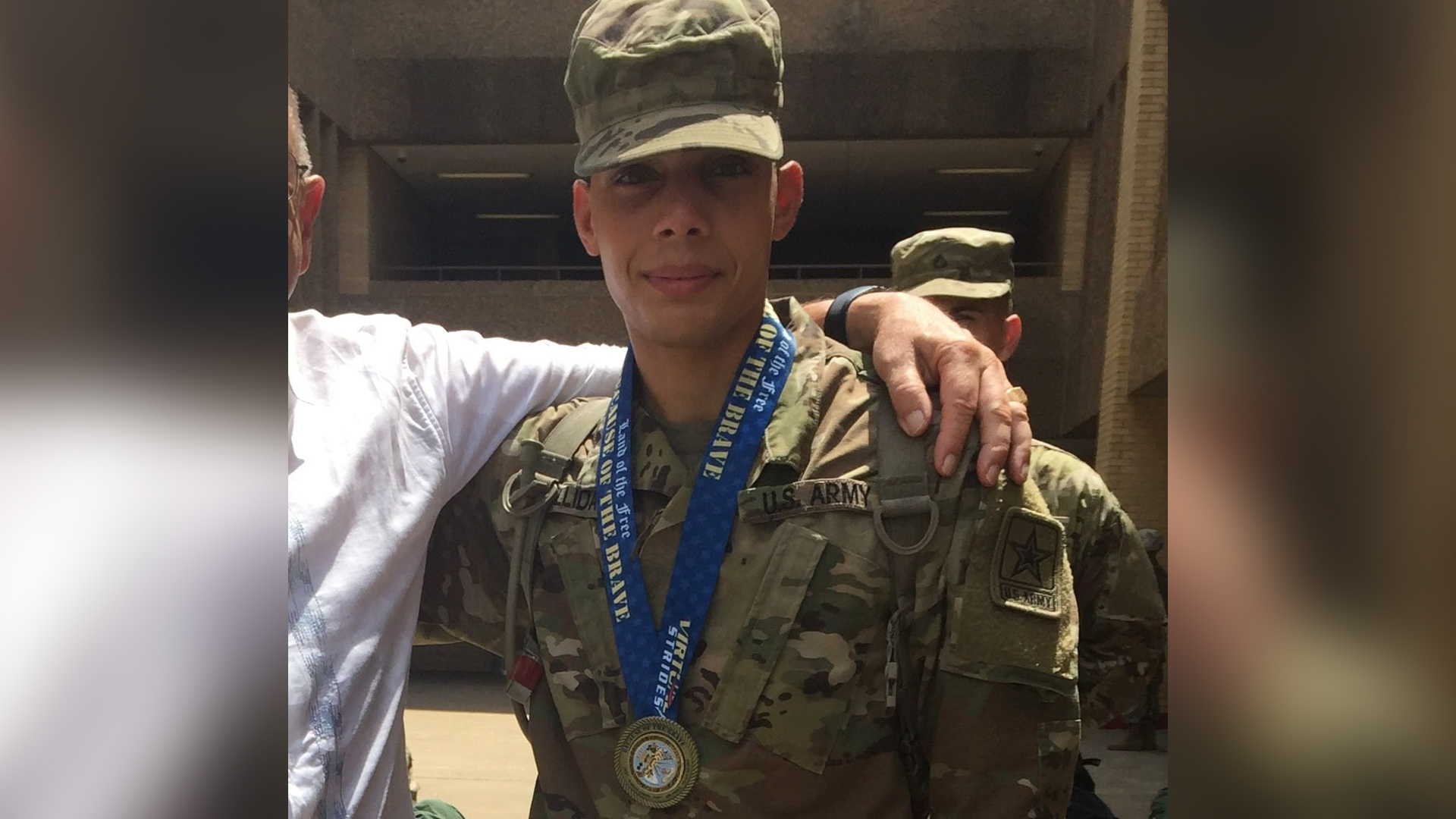

An internal investigation of the battalion of Pvt. Richard Halliday, the 21-year-old Fort Bliss soldier who has been missing since last July, found that the unit was under significant strain due to training and deployment requirements which led to low morale.
The investigation, which examined the command climate of the 1st Battalion, 43rd Air Defense Artillery, was directed on Nov. 17, 2020, by Fort Bliss Commander Maj. Gen. Sean Bernabe, according to a press release from 1st Armored Division. Investigators spoke with 52 soldiers from the unit and included more than 200 responses from four previous command climate surveys.
The investigation found that the unit was under “remarkable stress” from a relentless training and deployment schedule, compounded with the stress of the novel coronavirus (COVID-19) pandemic.
“After conduct of investigation and review of the sworn statements, it is my assessment that the battalion is tired,” the investigating officer’s summary said. The investigator also said they did not find evidence of “counterproductive, destructive, and/or toxic leadership” or a climate “that forced soldiers to feel that they had no choice but to go AWOL.”
Those findings were shared with the Halliday family on Jan. 22, the 1st AD press release said. Halliday, who is 5 feet 9 inches tall, was last seen on July 23 in gray or turquoise cargo shorts, a gray t-shirt, a gray zip-up hoodie, and dark gray running shoes with red, white, and yellow paint stains on them. Army Criminal Investigation Command said they do not suspect foul play, though his family has said they do.
In a Facebook live video on Monday, Patricia Halliday, Richard’s mother, addressed the investigation results and said it was clear to her there is “a problem with leadership” in the unit.
“When you can’t admit there’s a problem with leadership — when you have a soldier that has been gone for 200 days, then there’s a problem with leadership. There’s a failure in leadership,” she said. “So the [15-6 investigation] is really just a mockery.”
After the battalion returned from a deployment in Aug. 2019, they expected to not deploy again for at least a year, the investigators said, and developed a training schedule according to that timeline. But events in the U.S. Central Command’s area of operations after their return, including the ballistic missile strikes in Iraq in Jan. 2020, resulted in an increase in demand for air defense artillery units, and in turn, more training.
Their training schedule increased as they prepared for the possibility of having to deploy again in June 2020. The investigator wrote that the accelerated timeline made the battalion deploy to conduct field operations “multiple times” between Jan. and June 2020, sometimes in excess of 30 days.
“The battalion leadership determined that they were safer in a field environment to complete training readiness and protect the soldiers which caused additional stress on soldiers and families due to the unknown COVID environment,” the investigating officer wrote.
Ultimately, the high operational tempo “drove the soldiers of the battalion to have low morale and feel under appreciated.”
The issue of demanding training and deployment schedules was addressed by senior Army leaders last year at the Association of the U.S. Army’s annual conference. Then-Army Secretary Ryan McCarthy announced that the service was looking to cut down on combat training center rotations. An action plan sent out to Army leaders regarding the change said the Army’s focus on readiness over the years “resulted in an unsustainable operational tempo (OPTEMPO) and placed significant demands on units, leaders, and soldiers and families and stress on the force.”
Statements the investigating officer received from soldiers in the battalion went further in explaining just how worn out much of the unit felt, and how low the morale had dropped as a result.
One redacted statement said soldiers “have been worked to the extent where it seems like they are exhausted before even going on this deployment,” and that soldiers “don’t feel like their leadership care about them.” The same statement says that the 1-43 “has ruined the Army for a lot of soldiers.”
Another statement said that the unit “has unfortunately been willing to sacrifice all of its personnel to make numbers/slides green, instead of care for the team and the personnel in the organization,” and that leaders “have protected their own selfish interests over the welfare of the team.”
But other statements said while soldiers are tired, “there was no indication” of a toxic climate,” and attributed low morale to the unpredictability of COVID-19 and training schedules.
The investigating officer also asked soldiers specifically about Halliday, and if it seemed that he “had no other courses of action then to depart the unit.” One soldier said they did “not see any indication that he would think that the only course of action [for] him was to leave in this particular manner.”
Another soldier said their concern about Halliday’s disappearance is that “everyone is looking at this as a [battalion] or [battery] issue.”
“It seems like someone is trying to find a person or persons in the organization to blame for this incident,” the soldier’s statement says. “I’m not trying to say that as a unit we don’t have problems, because we are far from perfect. This was an isolated incident that could have been prevented had the soldier been separated from the Army a long time ago.”
There is currently a $25,000 reward for credible information regarding Halliday’s disappearance. Anyone with information is encouraged to contact the Fort Bliss CID office at 915-568-1700 or online.
Featured photo: Pvt. Richard Halliday. (Facebook)
